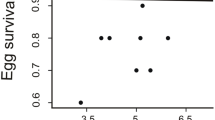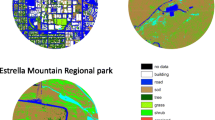Abstract
Carotenoids are colored pigments forming the basis of many avian social traits. Before their utilization carotenoids must be acquired through diet and mobilized for specific uses. The relationships between carotenoid-based coloration, circulating carotenoids and body condition have been well studied in adult birds, but little is known in nestlings. Here, we investigated variations in carotenoid-based coloration in a raptor nestling, the Montagu’s harrier (Circus pygargus), both in captivity and in natural conditions, and within a vole (poor-carotenoid source and cyclic prey) specialist population. We studied these variations according to nestling age and sex, and possible limitations in carotenoid availability by comparing years of contrasted prey abundance and using carotenoid supplementation experiments. Captive nestlings, fed only with mice, were strongly carotenoid limited. Wild nestlings were also carotenoid limited, especially in a year of high vole abundance. Nestlings were in better condition but less colored during a peak vole abundance year than during a low vole abundance year, when harriers targeted more alternative preys (birds, insects). Thus, variation in vole abundance resulted in a de-coupling of body condition and carotenoid-based coloration in this population. This suggested that the positive relation between the body condition and carotenoid-based traits, typically found in adult birds, could be restricted to adults or nestlings of species that feed on carotenoid-rich food. Our results should stimulate more work on the functions and mechanisms of carotenoid-based traits in nestlings, which deserve more attention and most likely differ from those of adult birds.



Similar content being viewed by others
References
Alonso-Alvarez C, Bertrand S, Devevey G, Gaillard M, Prost J, Faivre B, Sorci G (2004) An experimental test of the dose-dependent effect of carotenoids and immune activation on sexual signals and antioxidant activity. Am Nat 164:651–659
Amar A, Arroyo BE, Bretagnolle V (2000) Post-fledging dependence and dispersal in hacked and wild Montagu’s harriers Circus pygargus. Ibis 142:21–28
Bendich A, Olson JA (1989) Biological actions of carotenoids. FASEB J 3:1927–1932
Bertrand S, Faivre B, Sorci G (2006) Do carotenoid-based sexual traits signal the availability of non-pigmentary antioxidants? J Exp Biol 209:4414–4419
Biard C, Surai PF, Møller AP (2005) Effects of carotenoid availability during laying on reproduction in the blue tit. Oecologia 144:32–44
Biard C, Surai PF, Møller AP (2006) Carotenoid availability in diet and phenotype of blue and great tit nestlings. J Exp Biol 209:1004–1015
Bize P, Piault R, Moureau B, Heeb P (2006) A UV signal of offspring condition mediates context-dependent parental favouritism. Proc R Soc Lond B 273:2063–2068
Blas J, Boas R, Bortolotti GR, Marchant TA, Hiraldo F (2006a) Age-related variation in the adrenocortical response to stress in nestling white storks (Ciconia ciconia) supports the developmental hypothesis. Gen Comp Endocrinol 148:172–180
Blas J, Pérez-Rodríguez L, Bortolotti GR, Viñuela J, Marchant TA (2006b) Testosterone increases bioavailability of carotenoids: insights into the honesty of sexual signaling. Proc Natl Acad Sci USA 103:18633–18637
Blount JD (2004) Carotenoids and life-history evolution in animals. Arch Biochem Biophys 430:10–15
Blount JD, Surai PF, Houston DC, Møller AP (2002) Patterns of yolk enrichment with dietary carotenoids in gulls: the roles of pigment acquisition and utilization. Funct Ecol 16:445–453
Blount JD, Houston DC, Surai PF, Møller AP (2004) Egg-laying capacity is limited by carotenoid pigment availability in wild gulls Larus fuscus. Proc R Soc Lond B 271(Suppl):79–81
Bortolotti GR, Negro JJ, Tella JL, Marchant TA, Bird DM (1996) Sexual dichromatism in birds independent of diet, parasites and androgens. Proc R Soc Lond B 263:1171–1176
Bortolotti GR, Tella JM, Forero MG, Dawson RD, Negro JJ (2000) Genetics, local environment and health as factors influencing plasma carotenoids in wild American kestrels (Falco sparverius). Proc R Soc Lond B 267:1433–1438
Bostrom MR, Ritchison G (2006) Possible relationships between morphology, territory quality, and skin color of American Kestrels. J Field Ornithol 77:392–398
Brush AH (1981) Carotenoids in wild and captive birds. In: Bauernfeind JC (ed) Carotenoids as colorants and vitamin A precursors. Academic Press, New York, pp 539–562
Casagrande S, Csermely D, Pini E, Bertacche V, Tagliavini J (2006) Skin carotenoid concentration correlates with male hunting skill and territory quality in the kestrel Falco tinnunculus. J Avian Biol 37:190–196
Casagrande S, Costantini D, Fanfani A, Tagliavini J, Dell’Omo G (2007) Patterns of serum carotenoid accumulation and skin color variation in kestrel nestlings in relation to breeding conditions and different terms of carotenoid supplementation. J Comp Physiol B 177:237–245
Chew BP, Park JS (2004) Carotenoid action in the immune response. J Nutr 134:257S–261S
Costantini D, Møller AP (2008) Carotenoids are minor antioxidants for birds. Funct Ecol 22:367–370
Costantini D, Fanfani A, Dell’Omo G (2007) Carotenoid availability does not limit the capability of nestling kestrels (Falco tinnunculus) to cope with oxidative stress. J Exp Biol 210:1238–1244
Dawson RD, Bortolotti GR (2002) Experimental evidence for food limitation and sex-specific strategies of American kestrels (Falco sparverius) provisioning offspring. Behav Ecol Sociobiol 52:43–52
Endler JA (1980) Natural selection on color patterns in Poecilia reticulate. Evolution 34:76–91
Endler JA (1983) Natural and sexual selection on color patterns in poeciliid fishes. Environ Biol Fish 9:173–190
Endler JA (1990) On the measurement and classification of color in studies of animal color patterns. Biol J Linn Soc 41:315–352
Eraud C, Devevey G, Gaillard M, Prost J, Sorci G, Faivre B (2007) Environmental stress affects the expression of a carotenoid-based sexual trait in zebra finches. J Exp Biol 210:3571–3578
Faivre B, Préault M, Théry M, Secondi J, Patris B, Cézilly F (2001) Breeding strategy and morphological characters in an urban population of blackbirds, Turdus merula. Anim Behav 61:969–974
Faivre B, Gregoire A, Préault M, Cezilly F, Sorci G (2003) Immune activation rapidly mirrored in a secondary sexual trait. Science 300:103
Fridolfsson AK, Ellegren H (1999) A simple and universal method for molecular sexing of non-ratite birds. J Avian Biol 30:116–121
Goodwin TW (1984) The biochemistry of the carotenoids, Volume II: Animals. Chapman & Hall, London
Hill GE (1992) Proximate basis of variation in carotenoid pigmentation in male house finches. Auk 109:1–12
Hill GE (2006) Melanins and carotenoids as feather colorants and signals. In: Jamieson BGM (ed) Reproductive biology and physiology of birds, vol 6B. Science Publishers, Enfield, pp 41–73
Hill GE, Montgomerie R (1994) Plumage color signals nutritional condition in the house finch. Proc R Soc Lond B 258:47–52
Hill GE, Inouye CY, Montgomerie R (2002) Dietary carotenoids predict plumage coloration in wild house finches. Proc R Soc Lond B 269:1119–1124
Karadas F, Pappas AC, Surai PF, Speake BK (2005) Embryonic development within carotenoid-enriched eggs influences the post-hatch carotenoid status of the chicken. Comp Biochem Physiol 141:244–251
Kilner RM (2006) Function and evolution of color in young birds. In: Hill GE, McGraw KJ (eds) Bird coloration, Volume II: Function and evolution. Harvard University Press, London, pp 201–232
Laaksonen T, Negro JJ, lyytinen S, Valkama J, Ots I, Korpimäki E (2008) Effects of experimental brood size manipulation and gender on carotenoid levels of Eurasian kestrels Falco tinnunculus. PLos ONE 3:e2374
Lambin X, Bretagnolle V, Yoccoz NG (2006) Vole population cycles in northern and southern Europe: is there a need for different explanations fro single pattern? J Anim Ecol 75:40–49
Lessells CM, Boag PT (1987) Unrepeatable repeatabilities: a common mistake. Auk 104:116–121
Lozano GA (1994) Carotenoids, parasites, and sexual selection. Oikos 70:309–311
McGraw KJ (2006) Mechanics of carotenoid-based coloration. In: Hill GE, McGraw KJ (eds) Bird coloration, Volume I: Mechanisms and measurements. Harvard University Press, London, pp 177–242
McGraw KJ, Ardia DR (2003) Carotenoids, immunocompetence, and the information content of sexual colors: an experimental test. Am Nat 162:704–712
McGraw KJ, Hill GE (2000) Differential effects of endoparasitism on the expression of carotenoid- and melanin-based ornamental coloration. Proc R Soc Lond B 267:1525–1531
McGraw KJ, Adkins-Regan E, Parker RS (2005) Maternally derived carotenoid pigments affect offspring survival, sex ratio, and sexual attractiveness in a colorful songbird. Naturwissenschaften 92:375–380
Millon A, Bretagnolle V (2005) Non-linear and population-specific offspring sex ratios in relation to high variation in prey abundance. Oikos 108:535–543
Millon A, Arroyo BE, Bretagnolle V (2008) Variable but predictable prey availability affects predator breeding success: natural versus experimental evidence. J Zool 275:349–358
Mougeot F, Arroyo BE (2006) Ultraviolet reflectance by the cere of raptors. Biol Lett 2:173–176
Negro JJ, Tella JL, Blanco G, Forero MG, Garrido-Fernandez J (2000) Diet explains interpopulation variation of plasma carotenoids and skin pigmentation in nestling white storks. Physiol Biochem Zool 73:97–101
Negro JJ, Grande JM, Tella JL, Garrido J, Hornero D, Donázar JA, Sanchez-Zapata JA, Benítez JR, Barcell M (2002) An unusual source of essential carotenoids. Nature 416:807–808
Newton I (1979) Population ecology of raptors. Buteo Books, Vermillion
Olson VA, Owens IPF (1998) Costly sexual signals: are carotenoids rare, risky or required? Trends Ecol Evol 13:510–514
Royle NJ, Surai PF, McCartney RJ, Speake BK (1999) Parental investment and egg yolk lipid composition in gulls. Poult Sci 53:1801–1809
Royle NJ, Surai PF, Hartley IR (2001) Maternally derived androgens and antioxidants in bird eggs: complementary but opposing effects? Behav Ecol 12:381–385
Rubolini D, Romano M, Martinelli R, Saino N (2006) Effects of elevated yolk testosterone levels on survival, growth and immunity of male and female yellow-legged gull chicks. Behav Ecol Sociobiol 59:344–352
Saino N, Ferrari R, Romano M, Martinelli R, Møller AP (2003) Experimental manipulation of egg carotenoids affects immunity of barn swallow nestlings. Proc R Soc Lond B 270:2485–2489
Salamolard M, Butet A, Leroux A, Bretagnolle V (2000) Responses of an avian predator to variations in prey density at a temperature latitude. Ecology 81:2428–2441
SAS (2001) SAS/STAT User’s guide, version 8.01 SAS Institute Inc., Cary, NC
Scheiner SM (1999) Towards a more synthetic view of evolution (book review). Am J Bot 86:145–148
Senar JC, Quesada J (2006) Absolute and relative signals: a comparison between melanin- and carotenoid-based patches. Behaviour 143:589–595
Stradi R, Celentano G, Nava D (1995) Separation and identification of carotenoids in bird’s plumage by high-performance liquid chromatography—diode-array detection. J Chromatogr B 670:131–143
Surai AP, Surai PF, Steinberg W, Wakeman WG, Speake BK, Sparks NHC (2003) Effect of canthaxanthin content of the maternal diet on the antioxidant system of the developing chicks. Brit Poult Sci 44:612–619
Tschirren B, Fitze PS, Richner H (2003) Proximate mechanisms of variation in the carotenoid-based plumage coloration of nestling great tits (Parus major L.). J Evol Biol 16:91–100
von Schantz T, Bensch S, Grahn M, Hasselquist D, Wittzel H (1999) Good genes, oxidative stress and condition-dependent sexual signals. Proc R Soc Lond B 266:1–12
Acknowledgments
This study was conducted under a license delivered by the CRBPO (Muséum National d’Histoire Naturelle). This work was financially supported by the Research Group 2155 (CNRS, GDR) ‘Behavioural ecology’ through a collaboration between the Centre d’Etudes Biologique de Chizé (CNRS UPR1934, Chizé, France) and the University of Bourgogne (CNRS UMR5561, Dijon, France). We are grateful to L. Denonfoux and G. Leblanc for their dedicated help during the field work. Particular thanks are due to E. Arnoux and B. Faivre for help during laboratory analyses in Dijon and to S. Dano and C. Trouvé for help in molecular sexing. We thank M. M. Gouat for helping to maintain captive birds, and A. P. Møller and G. R. Bortolotti for helpful comments on the manuscript.
Author information
Authors and Affiliations
Corresponding author
Additional information
Communicated by G. Heldmaier.
Rights and permissions
About this article
Cite this article
Sternalski, A., Mougeot, F., Eraud, C. et al. Carotenoids in nestling Montagu’s harriers: variations according to age, sex, body condition and evidence for diet-related limitations. J Comp Physiol B 180, 33–43 (2010). https://doi.org/10.1007/s00360-009-0384-y
Received:
Revised:
Accepted:
Published:
Issue Date:
DOI: https://doi.org/10.1007/s00360-009-0384-y




